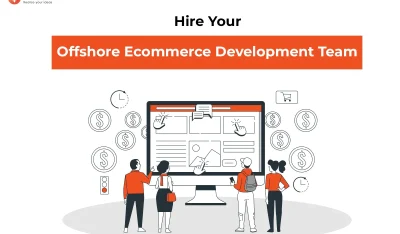- Home
- >
- Ecommerce Development
- >
- Update Essentials Guide for Developing next generation Enterprise Applications
Essentials Guide for Developing next generation Enterprise Applications is an article sent to you by the InApps editorial team. Hope readers will have more useful knowledge at www.inapps.net
You are viewing the article: Essentials Guide for Developing next generation Enterprise Applications
As the adoption of mobility usage is growing day by day, businesses have identified a huge scope in developing enterprise application, endowed with multiple functionality that enhance user experience, satisfy needs of customers, employees, other stakeholders, and generate maximum revenue.
Enterprise Mobility Solutions are sought for streamlining operations and leveraging the potential of technology to deliver highest customer satisfaction.
In today’s dynamic business environment, enterprise applications are complex, scalable, distributed and cloud enabled. They may be implemented on a variety of platforms across networks. A robust enterprise application must be:

1. User-friendly
2. Cloud-based
3. Cost effective
4. Secure
5. Modern
6. Administrable
7. Optimized
8. Maintenance free
In order to ensure success of an application with so many features and functionalities, quality testing is highly essential. The Enterprise Application Models mentioned below gives you a way to accomplish the above needs and deliver seamless user experience.

Let us understand the components under these development models:
Development model
- Development team
- Development process
- Project management
- Security
- Code Testing
- Delivery and maintenance
Business model
- Business goals
- Development cost
- Return on investment
- Resources needed
- Time constraints
- Business rules and policies maintenance
User model
- User interface
- Ease-of-use requirements
- Training and documentation
- Application support
Logical model
- Logical structure of the application
- Object and data modeling
- Business objects and services
- Interface definitions
Technology model
- Component development tools
- Deployment platforms System
- Database technologies
Physical model
- Physical application architecture
- Distribution and interconnection of components
- End product of the iterative inputs of each of the other sub-models
To build an enterprise application you need to create a small set of modules varying from different categories, and map each requirement with the other module. You can also use these models to break up the complex task of enterprise development into a small set of more manageable sub-tasks.
When you understand the interactions between groups of requirements, you can tackle them in a systematic manner, balancing and adjusting each requirement as you go.
Key Summary
- Overview: The article, likely published by InApps Technology in 2022, outlines key strategies for building modern enterprise applications, focusing on scalability, security, and innovation.
- Key Points:
- Next-Gen Enterprise Apps:
- Advanced software (e.g., ERP, CRM) leveraging cloud, AI, and microservices for business efficiency.
- Designed for large-scale, complex organizational needs.
- Core Components:
- Cloud-Native: Use Docker, Kubernetes, and AWS/Azure for scalable deployments.
- Microservices: Independent services with REST/GraphQL APIs for agility.
- DevOps: CI/CD with Jenkins, GitHub Actions; IaC with Terraform.
- AI Integration: Predictive analytics and automation (e.g., chatbots, AIOps).
- Security: Zero-trust, OAuth 2.0, and Snyk for vulnerability scans.
- Development Approach:
- Tech Stack: React/Flutter (frontend), Node.js/Spring Boot (backend), PostgreSQL/MongoDB (database).
- Agile Process: Scrum sprints, automated testing (Jest, JMeter), GitOps with ArgoCD.
- UX Focus: Mobile-first, responsive designs with Figma prototypes.
- Key Features:
- Real-time analytics dashboards, mobile access, RBAC, and workflow automation.
- 2022 Trends:
- Headless architectures, low-code platforms (e.g., OutSystems), and blockchain for secure transactions.
- Edge computing and sustainable coding practices gain traction.
- Next-Gen Enterprise Apps:
- Use Cases:
- Modernizing legacy HR systems with cloud-native microservices.
- Building AI-driven supply chain apps for retail enterprises.
- Benefits:
- Faster innovation, cost efficiency, and improved user adoption.
- Scalable, secure solutions for digital transformation.
- Challenges:
- Legacy migration complexity, skill gaps, and security overhead.
- Conclusion: In 2022, InApps Technology likely emphasized cloud-native, AI-driven, and secure architectures for next-gen enterprise apps, requiring Agile DevOps and strategic planning to overcome technical and skill challenges.
8 Industries benefiting by Enterprise Solutions
The above development models can be implemented and used to provide enterprise solutions for below 8 industries. As so many industries and enterprise giants have already been benefited by applying these development models.
By following the models mentioned above, as well as staying in close contact with your business requirement, you can confidently move forward for perfect enterprise solution. To develop a perfect enterprise solution you should fulfill following points:
- Choose and Execute the right development model
- Gather the right information
- Ensure security
- Cross platform support
- Alerts notification Updates
- Device Management
- Admin control
- Monitor and Measure the usage
Solution Analysts provides Enterprise Applications that supports variety of business organizations and leveraging enterprise apps with advanced capabilities such as access control, social integrity, and excellent search.
Our solutions help enterprises to quickly and efficiently adopt mobility solutions, thereby adding additional benefits to business.
Follow this to make sure you’ve got Essentials Guide for Developing next generation Enterprise Applications. Save and share with those around you these extras.
To learn more about ECOMMERCE DEVELOPMENT
Contact us:
www.inapps.net
Let’s create the next big thing together!
Coming together is a beginning. Keeping together is progress. Working together is success.










